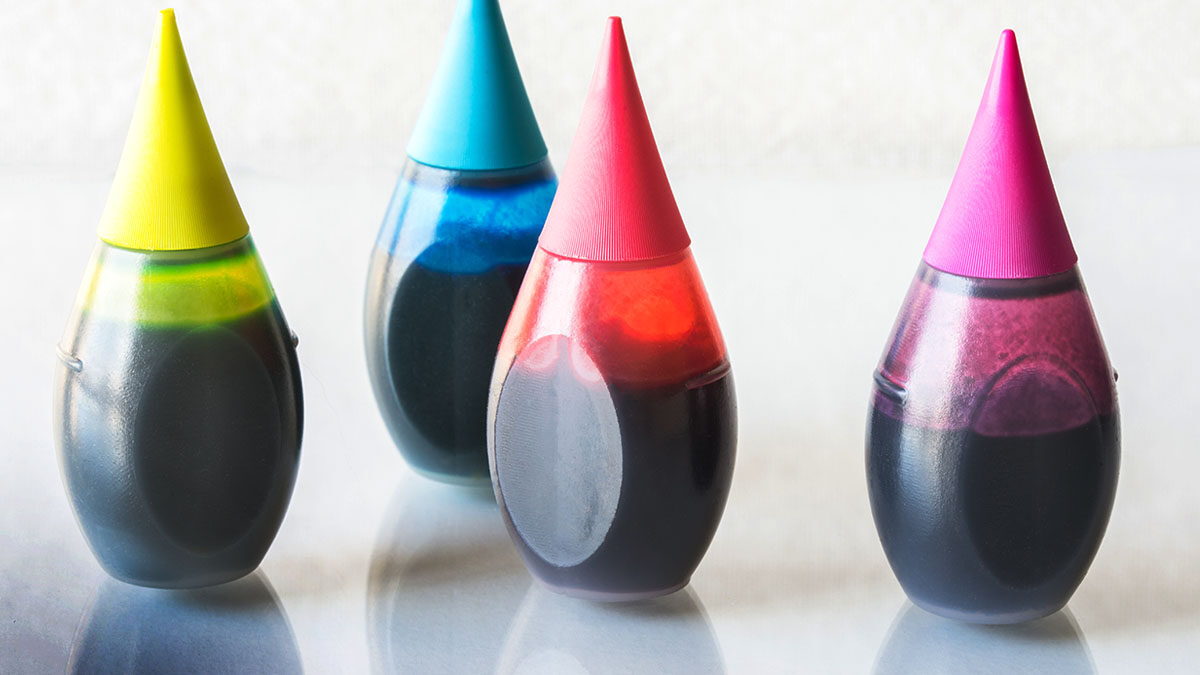There are currently thousands of additives in our food supply. Some are good—like supplementing foods with vitamin B12, for example (See Vitamin B12 Necessary for Arterial Health). Other additives involve weighing the risks and benefits. Take nitrites in processed meats. Yes, they may increase our risk of cancer but, as preservatives, they decrease our risk of dying from botulism (See When Nitrates Go Bad and Bacon and Botulism). Then there are additives used for purely cosmetic purposes, like food dyes, used to provide color to colorless and “fun” foods. According to the FDA, “Without color additives, colas wouldn’t be brown, margarine wouldn’t be yellow and mint ice cream wouldn’t be green.” Heavens forbid! Color additives are now recognized as an important part of practically all processed foods we eat.
Because we’re eating a lot more processed foods, we’re now getting five times more food dyes in our daily diet than we were 50 years ago. Fifteen million pounds of food dyes are used every year in foods, drugs, and cosmetics in the United States.
I always wondered why they called them, for example, Blue #1 instead of their actual chemical name in the list of ingredients. Then, after reading this report from the Center for Science in the Public Interest, I realized why. Picture a box of Kraft mac and cheese. It has Yellow #5. Would people be as likely to buy this product if instead of Yellow #5 it listed Trisodium 1-(4-sulfonatophenyl)-4-(4-sulfonatophenylazo)-5-(pyrazolone-3-carboxylate) on the label?
The list of food dyes used to be longer (See Artificial Food Colors and ADHD), but different dyes kept getting banned—including Violet #1, which, ironically, was the color used in the U.S. Department of Agriculture’s meat inspection stamp, so they may have been actually further cancer-ing up the meat.
Years ago I featured a landmark study in my video Are Artificial Colors Bad for You?, a randomized, double-blind, placebo-controlled food challenge in perhaps the most prestigious medical journal in the world. It showed that artificial colors increased “inattentiveness, impulsivity, and hyperactivity among young children.” So what happened? Well, the British government said, OK, there’re no health benefits to these dyes, only health risks, so it’s a no-brainer. They mandated that food manufacturers remove most of the artificial food colors from products. In fact, the whole European Union said that if manufacturers want to keep using the dyes, then they have to put a warning label stating: “may have an adverse effect on activity and attention in children.” Many international food companies have taken them out of their products in Europe, but continue to use them in the same products here in the U.S. where similar regulations are not currently in place. Why did the U.S. government take steps to get rid of them as well?
The FDA put together a committee that looked at the landmark study and conceded that the food additives may have resulted in changes in behavior, but the “type of treatment effects reported in the study, even though the investigators referred to increases in levels of ‘hyperactivity,’ were not the disruptive excessive hyperactivity behaviors of ADHD but more likely the type of over-activity exhibited occasionally by the general population of preschool and school age children.” A distinguished toxicologist basically responded, “look, low level lead exposure may only shave off a few IQ points off of kids, but just because they’d still fall within a normal range, doesn’t mean it’s OK to expose it to our kids.” And looking back now, the lead in leaded gas may have been causing brain cancer and possibly even urban violence—the aggravated assault rate in cities around the U.S. seemed to closely follow the lead levels in the air.
The Center for Science in the Public Interest continues to call on the FDA to ban food dyes and for food companies to voluntarily stop using them. Good luck with that. In the meantime, some researchers recently suggested a way to see which food colors may be damaging our child’s brain, advising parents to test artificial colors by purchasing little bottles of food dyes at the grocery store. Then have their kid do some homework or something and then have them chug down an artificial color and see if it affects their handwriting/reading/math at 30 minutes, at 90 minutes, and 3 hours. They also see if they get irritable later, have problems sleeping, and so on. If that’s OK, they say you should try even more to see if more will mess with their mind. If I may offer an alternate suggestion, maybe we shouldn’t buy our kids processed junk in the first place.
This whole saga reminds me of the artificial flavor in my video Butter-Flavored Microwave Popcorn or Breathing. It’s amazing what the food industry is able to get away with.
There is a campaign to get Kraft to remove yellow #5 from their mac & cheese, but even if the stuff didn’t glow in the dark it’s still just a blob of sodium (750 mg), saturated fat (4.5 g), and trans fat (2.8 g). The food movement might better spend its time encouraging healthier fare altogether.
How can we get our kids to eat less processed junk? I review some practical tips in my videos Tricks to Get Kids to Eat Healthier at School and Tricks to Get Kids to Eat Healthier at Home.
-Michael Greger, M.D.
PS: If you haven’t yet, you can subscribe to my videos for free by clicking here and watch my full 2012 – 2015 presentations Uprooting the Leading Causes of Death, More than an Apple a Day, From Table to Able, and Food as Medicine.
